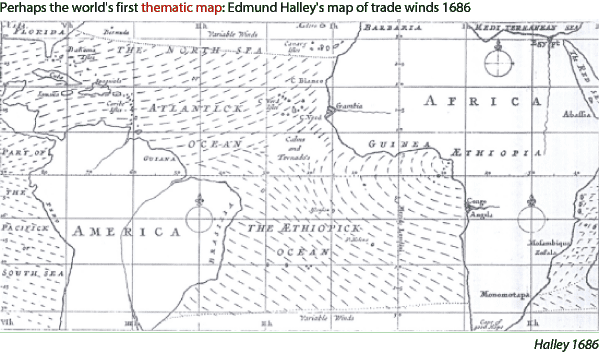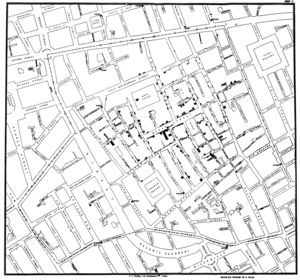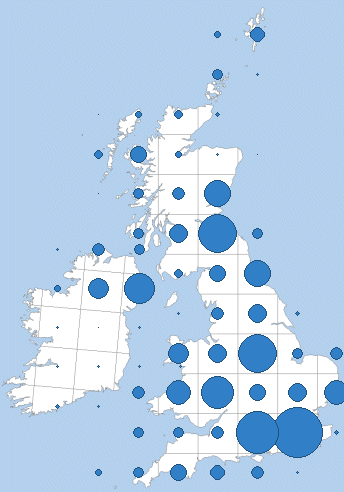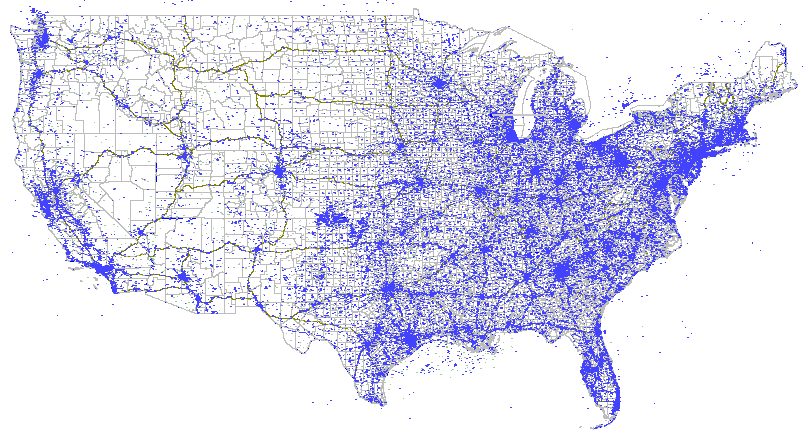Teaching:TUW - UE InfoVis WS 2007/08 - Gruppe 06 - Aufgabe 1 - Thematic Map: Difference between revisions
No edit summary |
No edit summary |
||
| Line 51: | Line 51: | ||
==== Dasymetric ==== | ==== Dasymetric ==== | ||
[[Image:zoom2_lowres.jpg|Dasymetric example]] | [[Image:zoom2_lowres.jpg|Dasymetric example]] | ||
=== References === | |||
Revision as of 18:05, 9 November 2007
Thematic Maps give information about spatial pattern of one ore more specific data themes for standard geographic areas.
For example:
- Physical phenomena like climate
- Human characteristics
- Population density
- Health issues like cholera
General maps show you where you can find something on this world but a thematic map tells you the story about.
History & Development


The first map was created by Edmond Halley (1686). This map includes the information of the direction of trade winds in the Atlantic Ocean.
The most famous example of an early thematic map was created by John Snow in 1855 and specifies the cholera progression in a specific area.
Use of Thematic Maps
Important aims of Thematic Maps:
- Thematic Maps provide specific information about particular locations
- They include general information of spatial patterns
- They open the possibility to compare patterns on one or two different maps
Further it is important for the cartographers to be careful to portray the data on the map so that it will be easy for the audience to use and understand. But they have even to notice the spatial accuracy, the aesthetics, human visual perception, the presentation format and the audience. The audience is very important because a political scientist will have other interest than a biologist scientist.
Even the marks and symbols a cartographer uses to represent data are relevant. Next step for displaying data is to collect data sets. Therefore you have to differ between univariate, bivariate and multivariate mapping.
Univariate mapping means to deal with one subject like cancer rates or the rainfall of a year. In comparison the bivariate mapping deals with two subjects like the population density in relation to the textile manufacturing. Multivariate mapping means only to deal with more than two subjects.
Methods
The most important methods for designing a thematic map are:
- Choropleth
- Proportional Symbol
- Isarithmic
- Dot
- Dasymetric




